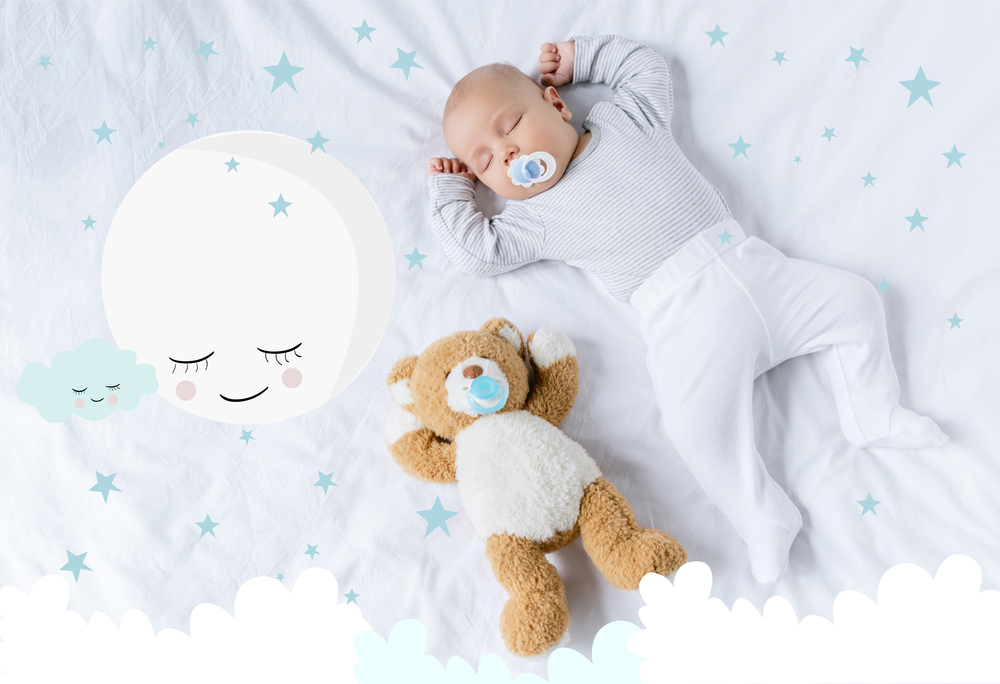By Dr. Harvey Karp
What if you treated your own bedtime and sleep space like it was your baby’s? Best guess: You’d start sleeping better, pronto! While there are no grownup-size swaddles or SNOOs (yet!), there is one baby-sleep magic wand that’s perfect for the whole family…and that’s white noise. Here’s how to use it to everyone’s sleep advantage—and why it works.
Why White Noise Works for Infants
Before your little one was born, they were constantly serenaded by the rumbly sounds of the womb. Those sounds were a comfort. They kept your baby happy and calm. And that’s what your baby wants to hear after they’re born, too! This familiar, low, rumbly, and gentle, shower-like sound helps turn on your baby’s calming reflex, or their built-in “reset button” to bring on sleep. And when that white noise is slightly rougher—and as loud as your baby’s crying—it quells crying and the fussies, too. (Again, familiar womb-like sounds are naturally calming to babies.) You can make your own white noise by putting your mouth close to Baby’s ear and making a strong “Shhhhhhhhhhhhhhh” sound. Of course, that can get exhausting, so relying on a quality white noise machine is definitely an easier route!
Proof White Noise Works
While parents and pediatricians alike can shout their praise of white noise from the rooftops, it’s always a great sign when science backs up what we know to be true. For instance, a 40-baby study published in the peer-reviewed journal Archives of Disease in Childhood, found that white noise helped 80% of little one’s fall asleep in just 5 minutes. Another study—this one in the Journal of Clinical Nursing—found that white noise significantly decreases the duration of crying and increases sleepytime in colicky babies. And the proof doesn’t just lie with babies. A 2017 report in Frontiers in Neurology found that white noise used in noisy hospitals can help reduce the time it takes patients to fall asleep by about 40%.
How White Noise Continues to Work for Baby
When your baby reaches about 3 to 4 months old, their innate calming reflex fades. But thankfully, white noise continues to work! You see, once you start using white noise in the background during your baby’s sleepytime routine, your little one will start to expect it and recognize that white noise means that bedtime has come. So, every time you turn the white noise on, your precious peanut will think, “Oh yeah, I know that sound…now it’s time for night-night.” (it’s like magic!) At the same time, white noise helps to distract children from some common internal sleep hiccups that can arise, such as teething pain, a slightly stuffy nose, or mild hunger. Essentially, white noise gives Baby something else to pay attention to, which can help lull them to sleep. (Don’t worry, white noise will never keep a truly hungry baby sleeping!)
Why White Noise Continues to Work for Big Kids and Grownups
Do you still get a little sleepy when you’re in the passenger seat, getting gently jostled in the car while listening to the steady hum on the highway? If so, then you already know that the power rocking and white noise lasts! Beyond the muscle memory that brings about road trip ZZZ’s, white noise works to muffle would-be disruptive sleep sounds, like a television in the next room or a loud truck passing your bedroom window. Proper white noise creates a kind of “blanket of sound” that masks sudden shifts in sound consistency that can often wake folks up. The key, of course, is selecting the right white noise. Low pitch sounds that are droning and hypnotic (remember the monotonous rumble of the car?) do the trick. What doesn’t: Inconsistent sounds, like music, waves, or birds chirping.
Know that White Noise is Not Addictive
There’s no need to turn off the white noise! For years, many parents continue using white noise with their children—and themselves—to boost sleep, and there’s zero harm in that. Think of white noise as just another healthy sleep tool, along with your comfy pillow and warm blanket, that helps get you and your bub to dreamland. That said, it’s pretty easy to wean from white noise whenever you want. Simply gradually lower the sound, bit by bit, over a week or two until it’s finally off.









